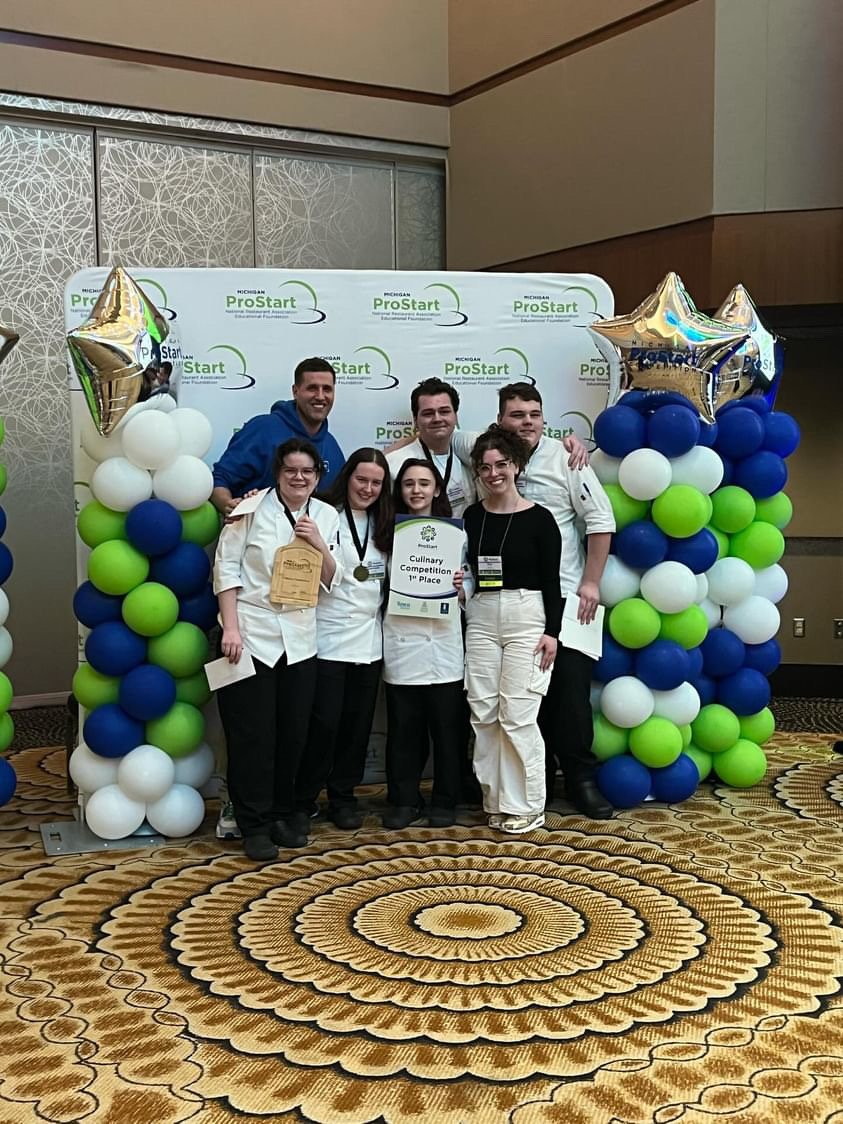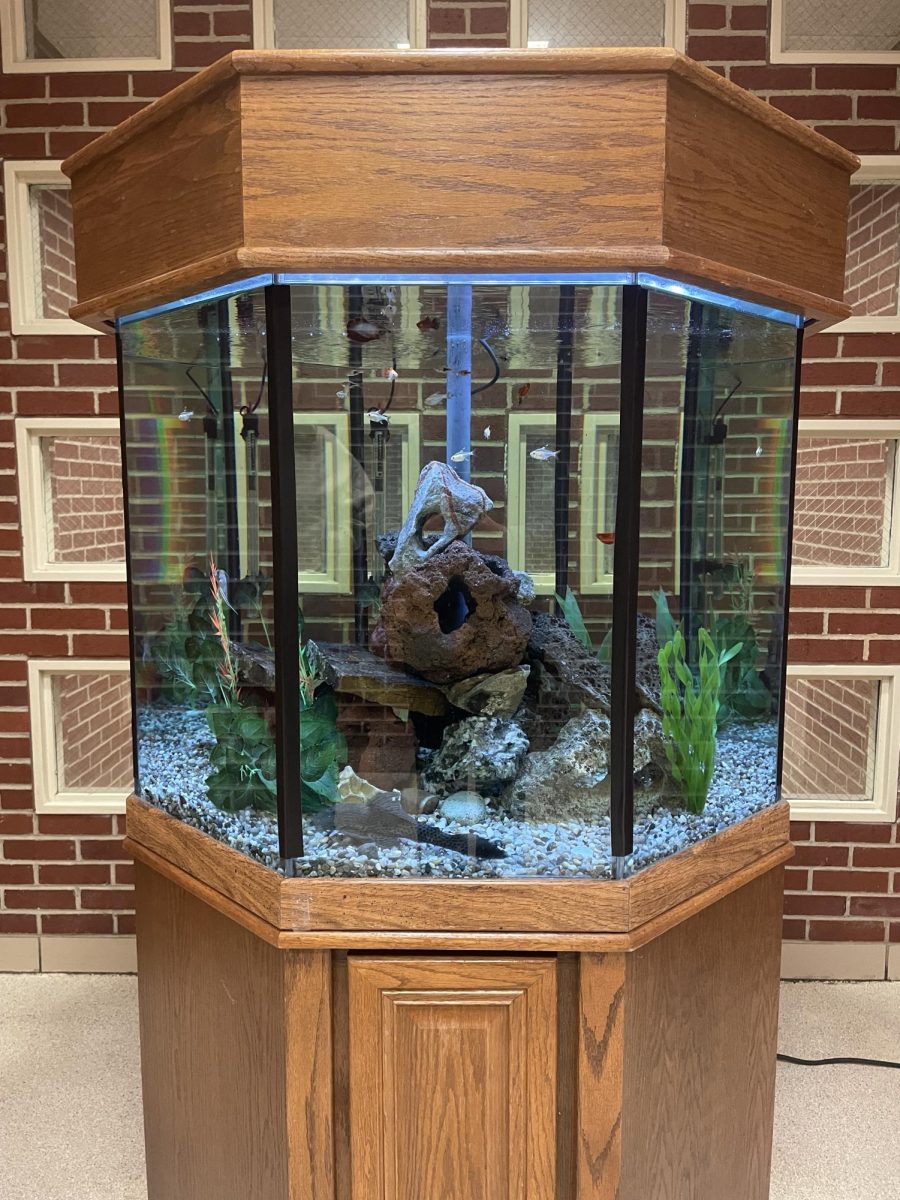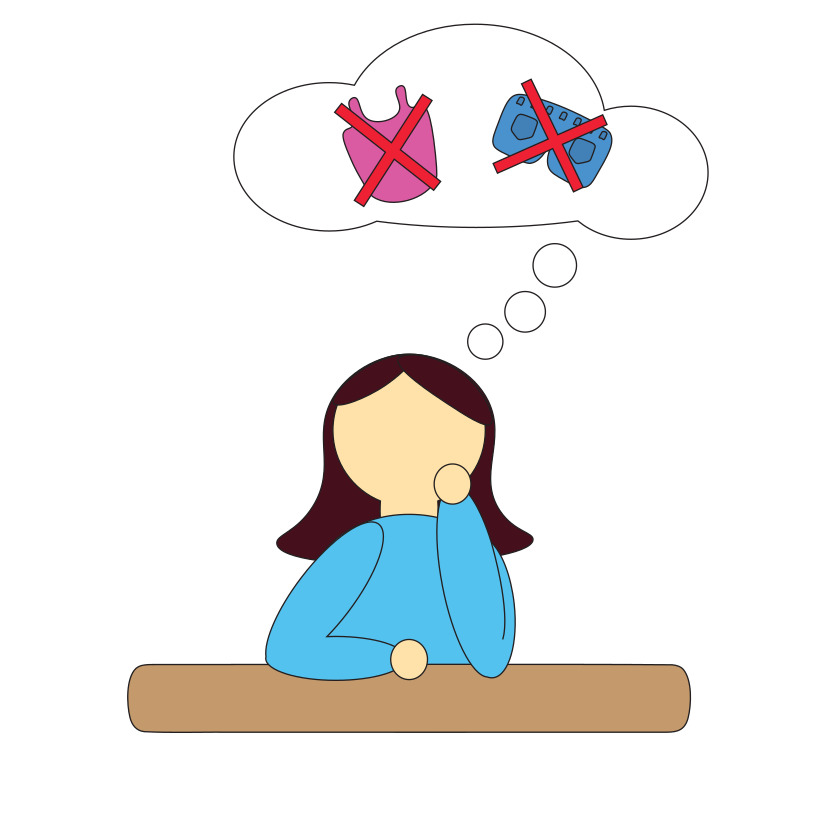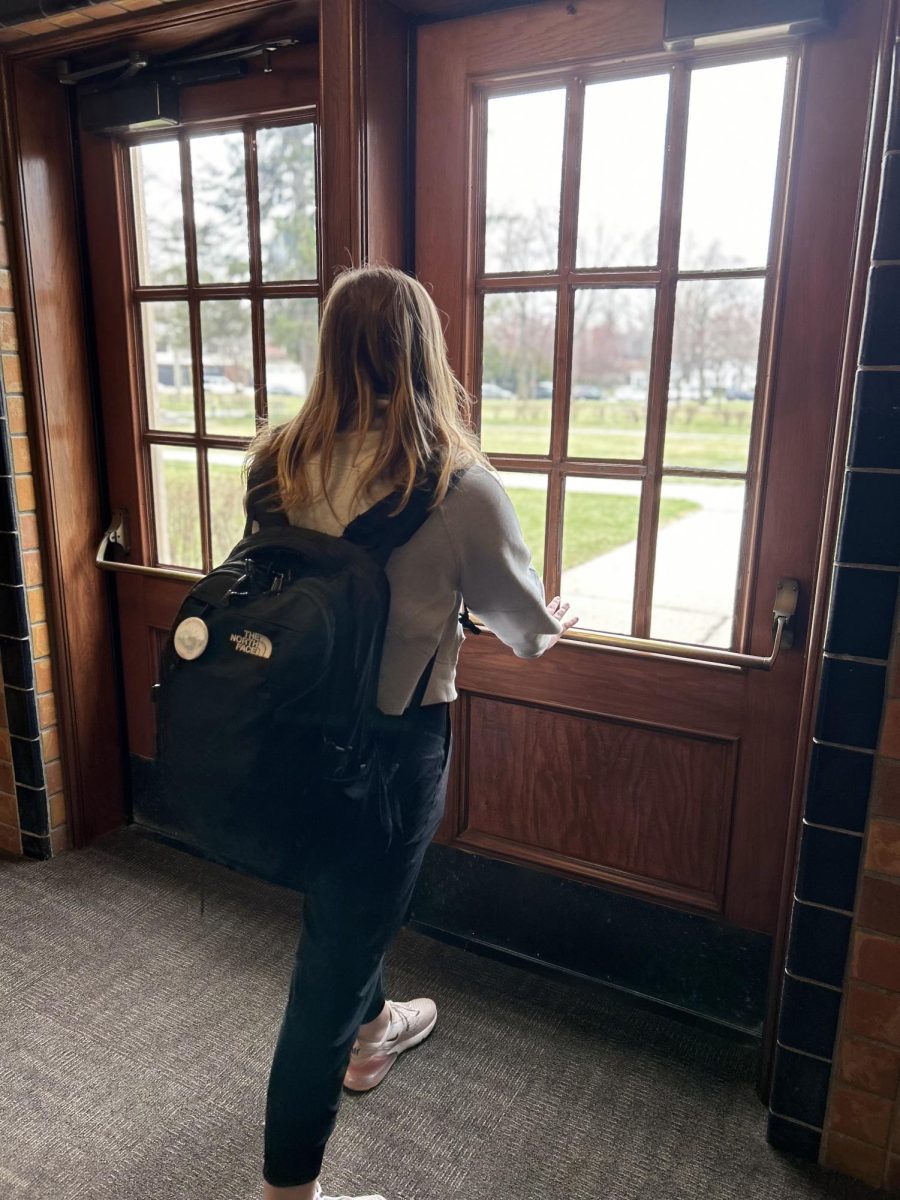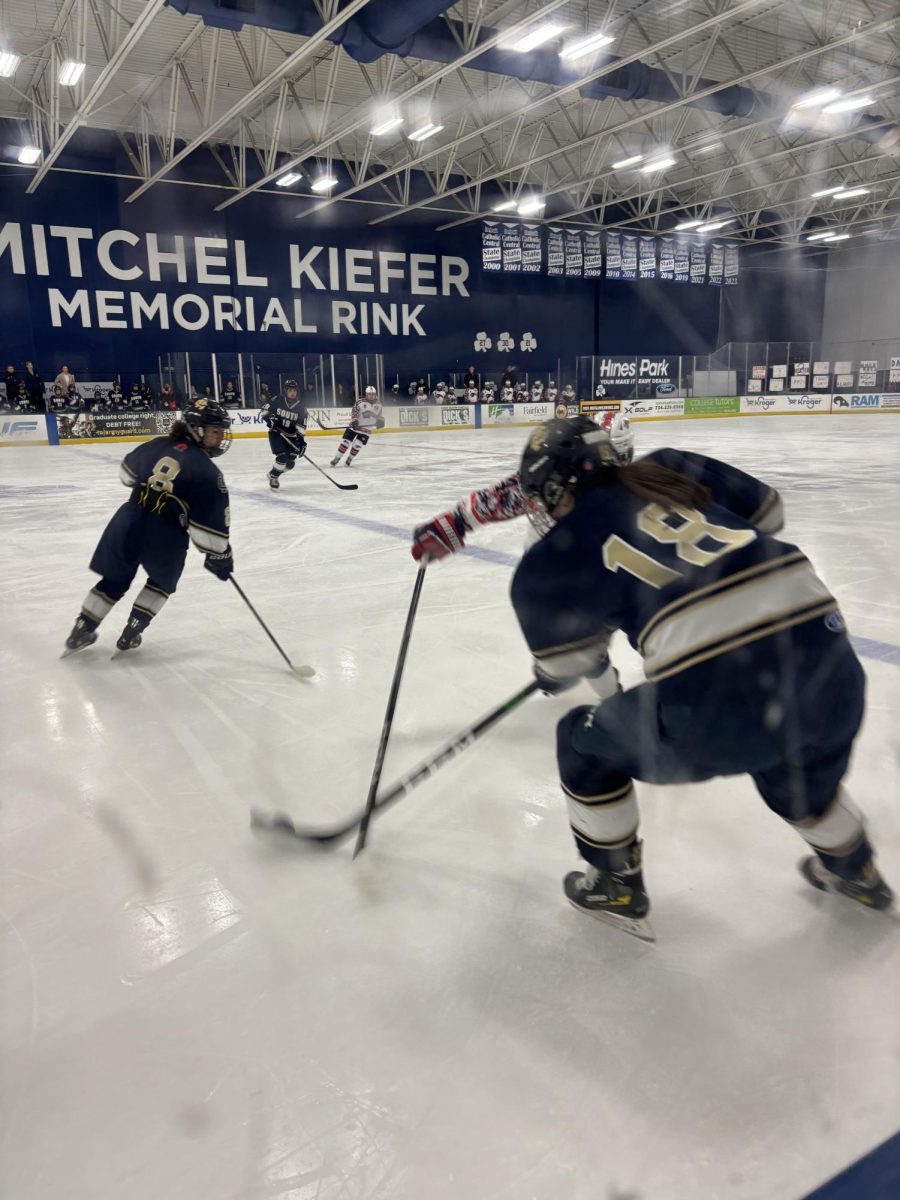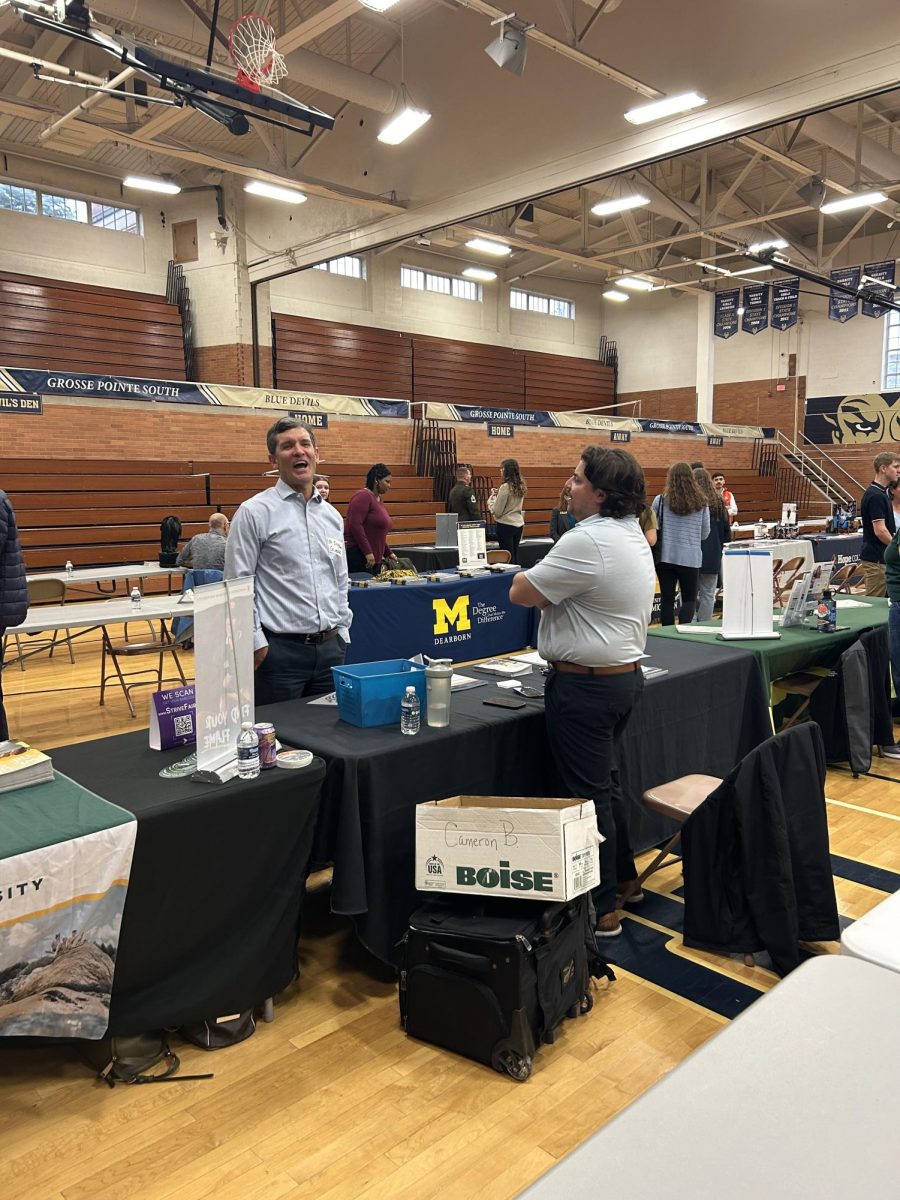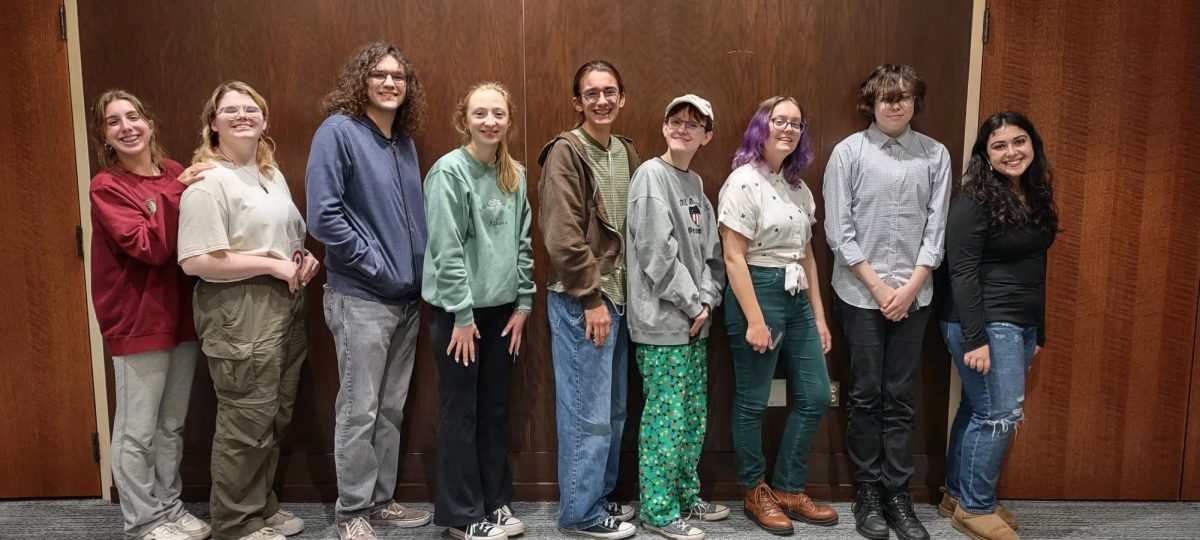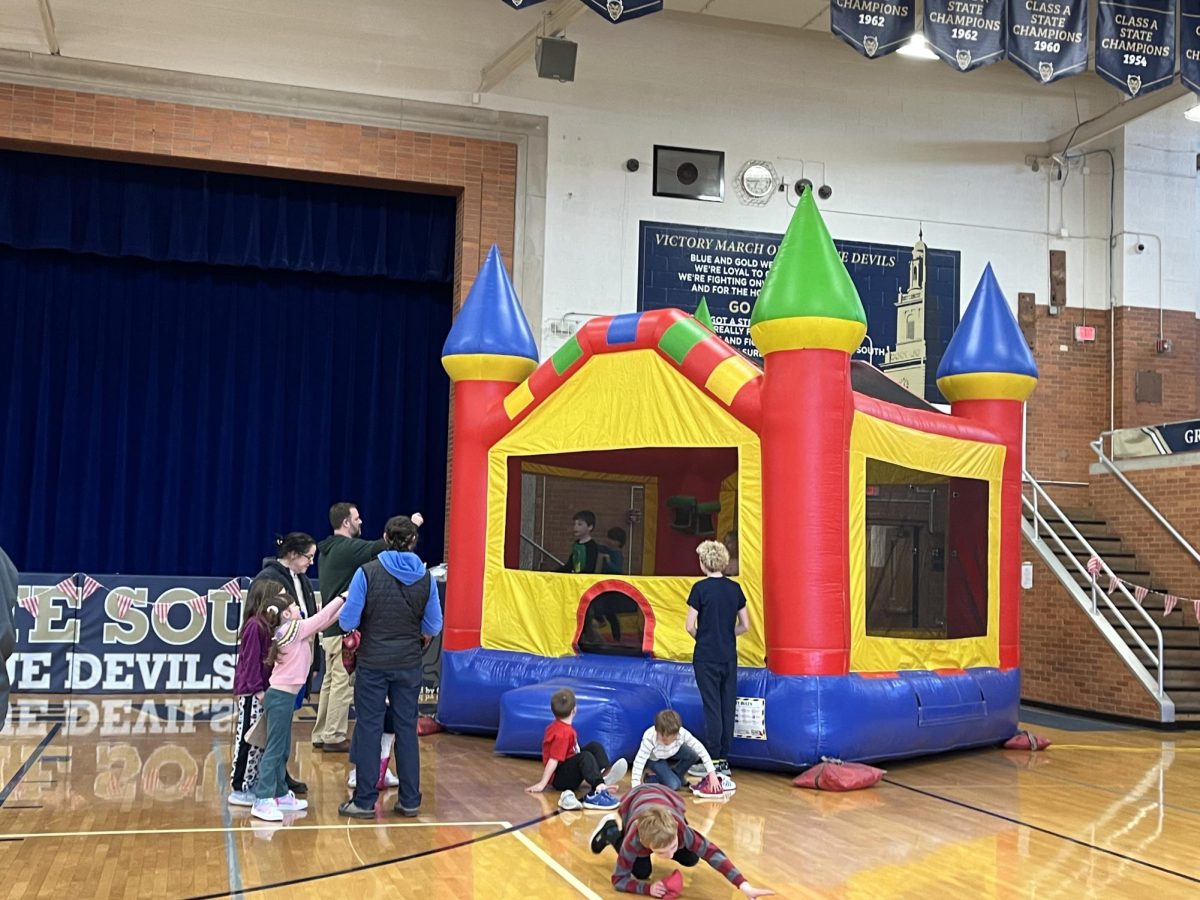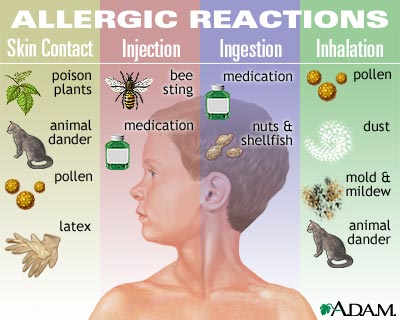By Jennifer Tonjes ’16 and William Muawad ’17 | Photo Editor and Staff Writer
The Adam’s family is up north enjoying their vacation, up until Josh Adams ’17 decides to eat a cupcake. Within seconds of the first bite, Adams’ lips swell to a clown-like level, as his breathing becomes difficult and his face turning bright red as he throws up.
They family gets into the car eagerly and rushes to Northern Michigan hospital in Petoskey. Adams’ condition worsens, forcing his father and biology teacher at South, James Adams, to use an epipen and inject adrenaline into him. After the doctors care, Josh is back to normal. As they are leaving, the doctor tells James that if he hadn’t used the epipen when he did, Josh might not have survived.
Nut Allergy
Josh and his twin brother Seth Adams ’17 both are deadly allergic to peanuts and nuts in general, according to Adams.
“My twins have an allergy to pretty much all nuts and their allergic reaction is one of the most severe that you can have,” Adams said. “You get a blood test for your allergies and how reactive you are to them. A 20 is highly sensitive and they are over 100. So their allergy is deadly for them.”
Caring for children with nuts can be extremely difficult at times, especially when they are young, according to Adams.
“As a parent with kids being such a young age, you are in charge of what goes in their mouth or not considering they have no idea,” Adams said. “In that case, we had to be sure there was nothing around that had any nuts in it whatsoever.”
As the children get older though, a new sense of stress and worry is placed on the parents, according to Adams.
“With this fear, they could police themselves a little more, becoming easier on us as parents,” Adams said. “When traveling, it could be harder because we have to have lots of epipens so if they have a reaction, we will have enough time to get them to a hospital because they only last about 20 minutes.”
In addition to the whole family carrying epipens on them at all time, the parents need to make sure what their children is eating is safe, according to Adams.
“During classroom parties when they were growing up, they always had to have their own thing on the side that they could eat,” Adams said. “If people brought in cupcakes, they couldn’t have them because we didn’t if there was anything that they were allergic to in it. Then we would have boxes of Rice Crispy treats that they could have at the same time.”
This selective eating habit is crucial to living with and parenting children with this type of allergy, according to Mr. Adams.
“The twins tend to be careful about that and so do we,” Adams said. “In a restaurant, you constantly have to ask the waiter or waitress if there is any nuts or if it’s prepared on anything with nuts, which is annoying for the kids to listen to, but it’s part of what we do for them.”
Communication is key, Adams said.
“You have to communicate it to everybody and everywhere that they had this allergy,” Adams said. “You have to put it on every form, especially when playing a sport.”
Communicating, epipens and constant awareness are some of the additional tasks that parents with children who have severe allergies have to deal with, leading to more of an extreme parenting style, according to Adams.
“It is parenting more in the extreme,” Adams said. “You have to be the parent, but you the fear of it being life threatening.”
Celiac Disease
While many allergies contribute to immediate reactions, such as skin irritation, or more severely, critical health conditions, some intolerances result in long term effects, Adams said.
According to UCLA health, one in 133 people have celiac disease. Celiac disease is described as an autoimmune digestive disorder, inflammation to the small intestines will occur, as well as long-term side effects ranging from malnutrition to neurological disorders.
“She was 6 1\2 when she was diagnosed,” art teacher, Micki Cecil said.
Cecil noticed her daughter’s lack of growth, as well as abundance of headaches and knew that was abnormal especially for her age. “There were ranges of irritable bowel symptoms in one sudden day,” Cecil said.
“One minute she’d be crying, the next she’d be happy…the next minute she was telling us she can’t feel her legs, feet, and toes…it was a multitude of things.”
Cecil had to be persistent with doctors in order to identify the cause of her daughter’s symptoms.
The doctors believed the reason for the lack of growth was due to genetics from Cecil and her husband. Finally she found a second opinion from an Endocrinologist. “We didn’t see it become a problem until, unfortunately, she was ingesting it for years,” Cecil said, “The only treatment is a strict gluten free diet.”
After about two years, the diagnosis was final.
“She’s not allergic, she won’t immediately have symptoms, she can’t ingest it because it attacks the small intestines,” Cecil said.
Although similar, celiac disease is different than non-celiac gluten sensitivity Cecil said. Non-celiac gluten sensitivity is not transmitted genetically, and not an autoimmune disorder. The reactions are different, in this case fatigue, abdominal pains, cramps and constipation would be a result. Wheat allergies also get confused with these two, caused by contact as well as ingestion resulting in hives, bloating and vomiting.
“The most common treatment is avoidance,” Dr. Tom Stevenson of Michigan Health Information said. “Typically most people can tolerate gluten, but have symptoms when they reach a certain point.”
Seasonal Allergies
Every year when the weather changes the temperatures go from cold to warm and vice-versa, Erica Chown ‘17 said.
“Due to the change in seasons, I become sick for a week and then get bad allergies for two weeks after that,” Chown said.
These allergies are not life-threatening by any means, but do have their annoying symptoms, according to Chown.
“I don’t have a sore throat, I cough and sneeze and my nose runs constantly,” Chown said. “I am congested, my voice changes, I sound like a 13 year-old hitting puberty and I sometimes have a hard time breathing.”
To try and combat her seasonal allergies and tone down these symptoms when they get really bad, she takes Claritin, according to Chown.
Dr. Stevenson starts his patients out with non drowsy antihistamines, much like the Claritin Chown takes. If that is not sufficient for a particular patient Dr. Stevenson moves to stronger versions of Claritin, which would typically be Benedryl.
“Another alternative is Singulair, a leukotriene inhibitor that works for a subset of people,” Stevenson said. “Some people will go through desensitization using allergy shots.”
While not contagious, the allergy and its symptoms causes her to become bedridden and alone, according to Chown.
“I am usually house ridden because it is hard to function with this bad of allergies, Chown said.
Pet Allergies
“I am not severely allergic but I become itchy, watery-eyed and sneeze when I am around cats,” Kristin Lawrence ‘16 said. “I know some people swell up and can’t breath, so I’m grateful it’s not that serious.”
Even with the reactions caused by cats, Lawrence has always had cats and currently has two of her own.
“Like I said, allergies aren’t so severe I have to avoid them at all costs,” Lawrence said. “I can pet them, but I can’t sit with them for a long time.”
Lawrence hadn’t always had allergies to cats. It wasn’t until recently when the symptoms of allergic reactions started to develop.
“One day I was sitting with my cat, and she started rubbing her head and licking me, which is when I became itchy, Lawrence said. “About a week later, I was laying down watching TV with my cat and all of a sudden my eyes are pouring tears and I was sneezing non-stop.”
Benadryl and visine became the anecdote for Lawrence’s allergies. Since the reactions became more prominent, Lawrence doesn’t accompany cats as much as she used to be able to. “My cats and I keep a nice distance from each other,” Lawrence said.




